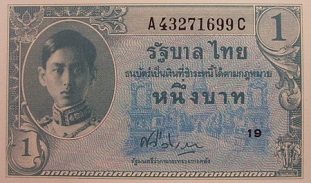
1 Baht Banknote (1946 - 1949)
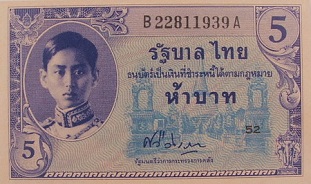
5 Baht Banknote (1946 - 1949)
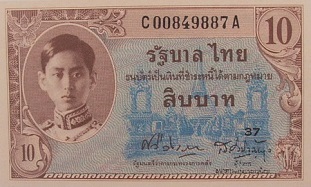
10 Baht Banknote (1949 - 1949)
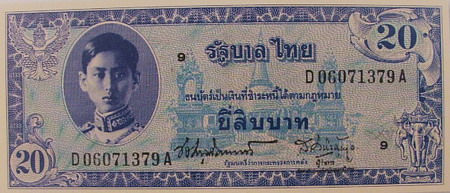
20 Baht Banknote (1946 - 1949)
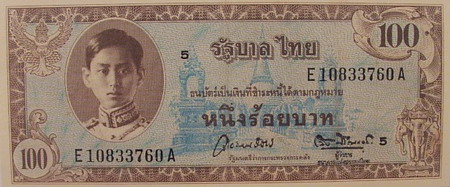
100 Baht Banknote (1946 - 1949)
Appraisal price ; click on each denomination

Banknote Info
Thailand in the WW2 period had still faced the shortage of banknotes even Thai government had taken charge of banknote printing. But there were not so many cases of counterfeiting because the government took control all printing works and all printing suppliers.
In the beginning of 1945, the inflation in Thailand was very hike. The Bank of Thailand tried to absorb the 1000 baht banknotes by exchange them into saving bonds. The government promulgated the saving bond in time of crisis act in 1945. One those who held 1000 banknotes could exchange the saving bonds and could redeem them in 12 months with 1% interest. This solution could eased some inflationary pressures.
At the end of war in August 1945, the wide spread of banknote counterfeited were found especially on 20 and 50 baht denominations. The government tried to solve this problem and planned to withdraw them.
The preparation was placing orders to Thomas de la Rue in England but the company was damaged from the war and was unable to print. So the Thai government turned to order the Tudoor Press Inc, the US printing company to print.
The government put 50 Satang overprinted on 10 baht banknotes and 1 baht (invasion notes) into circulation to temporarily solve the problem. Until October 1946, after the reign of King Rama 8, those new banknotes from America were delivered. Then the minister of finance announced on November 20th, 1946 the withdrawal of 20 baht and 50 baht banknotes of all issues that circulated before the date of announcement.
The 8th series banknotes composes of 5 denominations; 5, 10, 20, 100 and 500 baht. The paper used was that used for banknotes that were used by the US army as currency in the areas under their control in Europe at the end of the war. The paper had a watermark "MILITARY AUTHORITY". After supplies of this watermarked paper were exhausted, plain paper were used. To make it easy to verify and prevent forgery, Arabic numerals from 1-70 were printed in black ink at the right corner of the front of 1, 5 and 10 baht notes. The 20 and 100 baht notes were printed from 1-50 in two places on the front.
The government placed order more than 300 million notes. Normally, all imported banknotes were printed the signatures in Thailand. Because of a large number of notes, the signature printing process might took 2 years. The government decided to have signature printed from US in all denominations excepted 100 baht notes. After the stable demand, all denominations were printed the signatures in Thailand.
